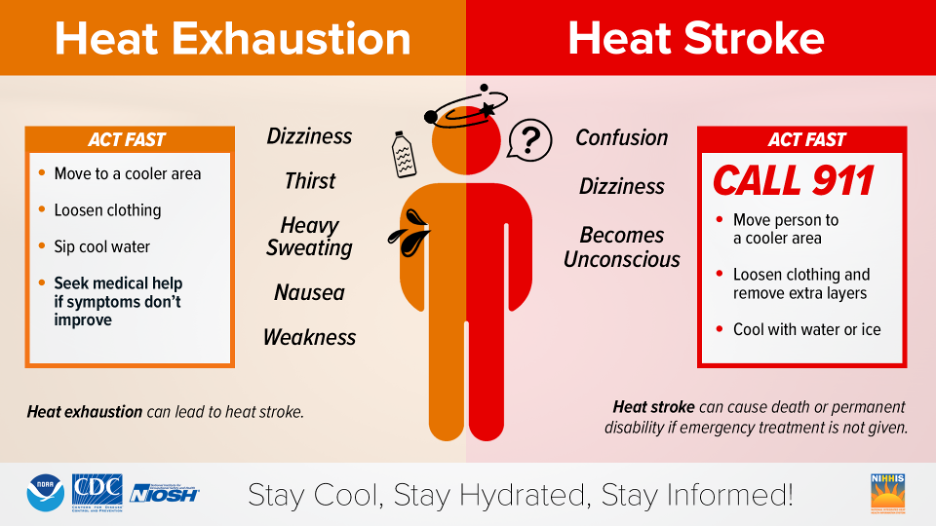
Heat stress has long been an identified workplace hazard for many occupations and workplace activities. Heat stress, if not prevented or managed effectively, can lead to heat-related illnesses that can be severe or life-threatening, such as heat stroke, heat exhaustion, heat rashes, and heat cramps.
The UMBC Heat Safety Program was established to assist in the management of heat stress and the prevention of heat-related illnesses when members of the UMBC community perform work-related activities in these conditions.
The Heat Safety Program and its requirements will take effect when faculty or staff (including paid students) are assigned work in areas where conditions equal or exceed a heat index of 80 degrees Fahrenheit (80°F) and where work is performed for more than 15 consecutive minutes per hour. This applies to work that takes place outdoors as well as in unconditioned indoor environments that meet these conditions.
Additional requirements take effect when the Heat Index reaches High Heat levels – meeting or exceeding 90°F.
The Heat Safety Program at UMBC establishes the following requirements:
- Provisions for Employees – Employees must be provided the following:
- Access to plenty of cool, potable water.
- Shaded outdoor or conditioned indoor areas.
- Personal protective equipment (PPE) such as lightweight, breathable clothing, cooling vests, or reflect clothing to reduce radiant heat load.
- Departments must implement Work Practice Controls, such as –
- Acclimatization – gradually increasing heat exposure to a new or returning employee over a period of time.
- Work Scheduling – Scheduling work for cooler parts of the day whenever possible.
- Work/Rest Cycles – Modifying work/rest cycles to shorten heat exposure and allow for frequent short breaks in shaded or conditioned areas.
- Employee Observation – using the “buddy system” where employees frequently check on peers throughout the day to monitor for signs of heat-related illness.
- Training- Employees must be trained on how to identify heat-related hazards and protect themselves against the effects of heat-stress and heat-related illness. ESH provides Heat-Related Illness training through the Webnet (eSafety) learning management system. Contact ESH for assistance with accessing this training.
- Department (and Shop/Unit where applicable) Supervision must complete a Heat Stress Prevention and Management Plan that will outline the measures that will be implemented to prevent heat stress for their employees on days when the Heat Safety Program takes effect. A fillable template is available from ESH for organizational use.
